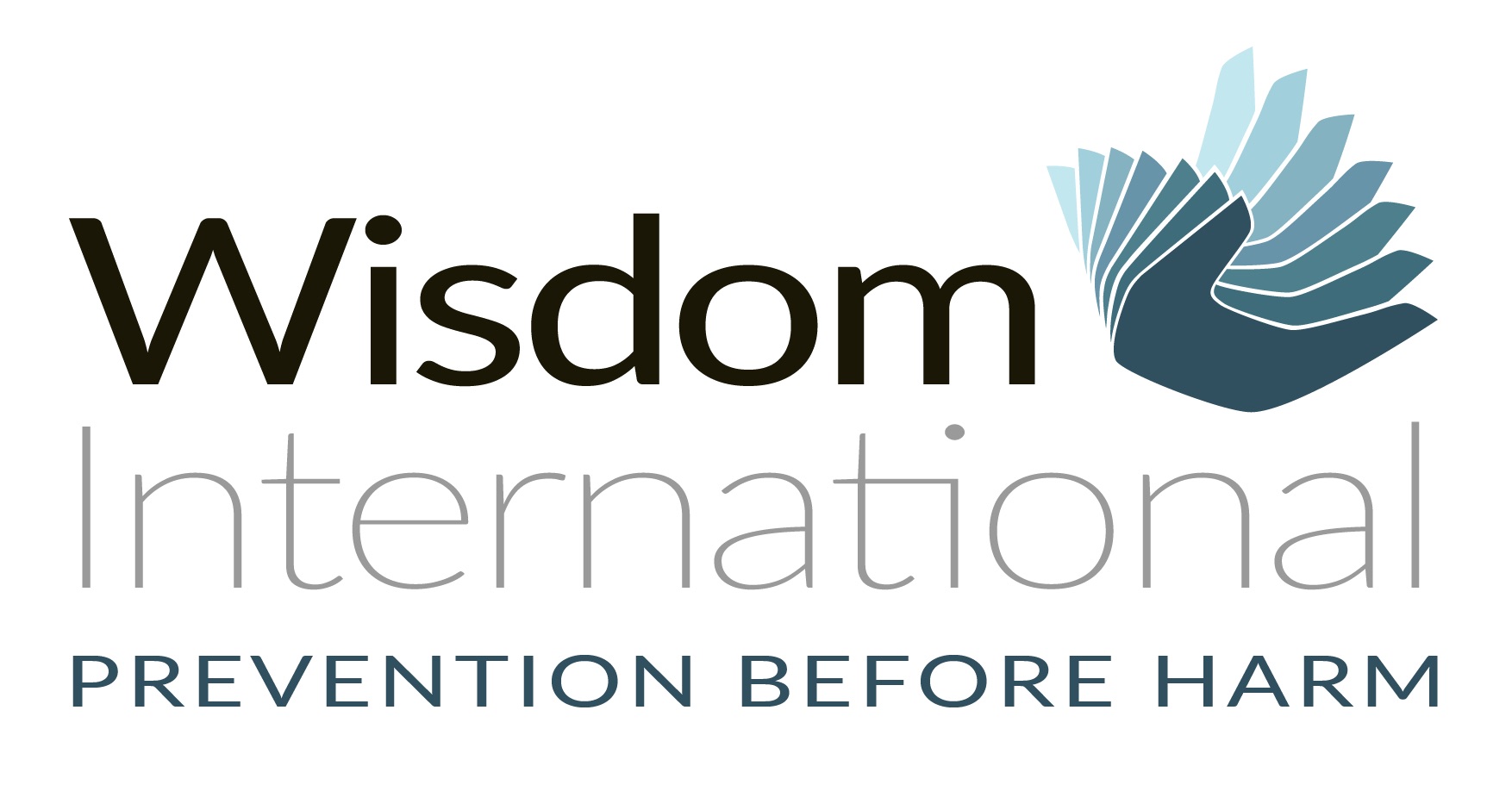Sexual predation is never acceptable.
It is not ‘normal’ just because it has always happened. It cannot be considered a profession. Whomever the victim, it is a serious offense. Sexual abuse, trafficking, exploitation, whatever name you give it, is a Violation of a person’s basic Human Rights, practiced most commonly, but certainly not exclusively, against women and girls. It is worthy of our attention regardless of the person or the population affected.

NATIVE AMERICAN INDIGENOUS PEOPLES
Statistics on violence against Native populations and on Missing and Murdered Indigenous Women and Girls (MMIWG2) begin to open our eyes to the magnitude of injustices perpetrated against Native American and Alaskan Native peoples.
However,…
Statistics do not give us reasons; they give us facts. And facts are easy to tuck away in our consciousness as something that needs to be addressed later, and not necessarily by us personally; after all, “We don’t do that,” “We are not responsible.”
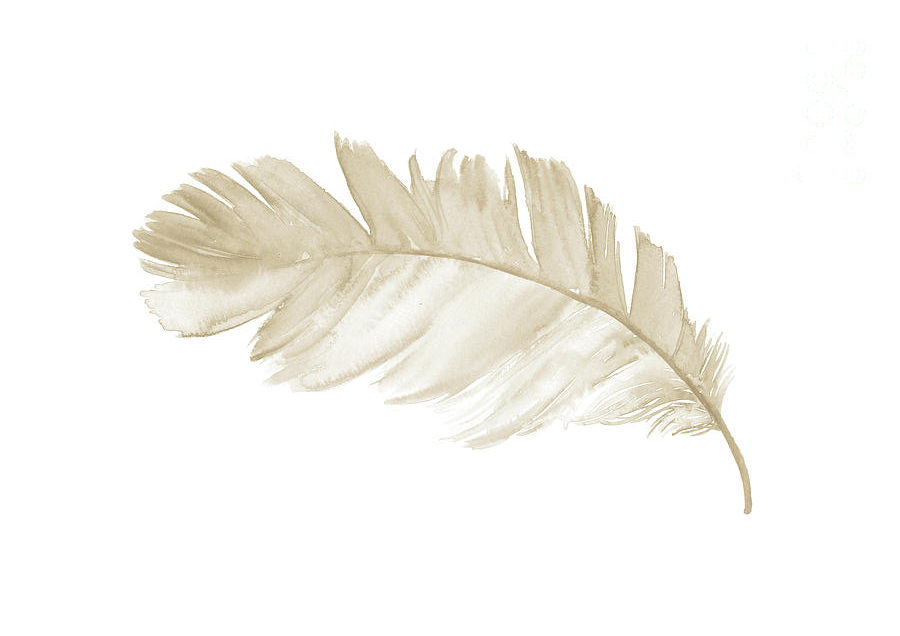


STRONG, BRAVE, EXOTIC, EROTIC
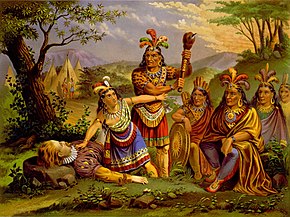
Pocahontas, Princess Matoaka, daughter of Chief Powhatan of the Tsenacommacah network of tribes; bravely intercedes between her father and John Smith preventing his execution in 1607.
Sacagawea, Lemhi Shoshone; helped guide Lewis and Clark during their exploration of the Louisiana Territory in 1804-1806.
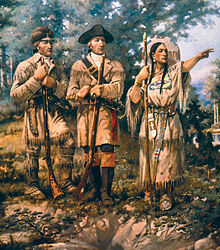
SCHOOL-TAUGHT FOLKLORE
of legendary Native women risking their lives for the ‘white man’ filled our brains with impressions of the Indian female, strong, brave, and exotic; our young minds, weaving their stories into their deer hide dresses, beaded moccasins, and hand-made feathered headbands for their sons…
SCHOOL-TAUGHT TALES
of the “discovery of America,” that Spanish explorer’s name and the fateful 1492 date etched firmly in our brains, hinting that nothing of value existed before then; an October celebration for many still today in spite of the truth if rampant exploitation by Columbus’ men….
Come November, ask a white man, “What is the meaning of Thanksgiving?” and watch as they respond, “Eating turkey and cranberries,” without the slightest recognition of “white” shame. Even embassy personnel representing the USA in foreign lands do not recognize or remember the first harvest celebration, they are not taught about the desecration caused by Columbus and his men.

Other impressions of Native Americans portrayed in museums, pictures, drawings and films have been and are of erotic, fierce female warriors, who are, of course, eventually tamed; of proud, savage, but confused Indian males who are regularly doomed to defeat whether chief or young brave; or of Indian mothers, papooses strapped to their backs, toiling endlessly for their families, ever silent, ever enduring.
While Pocahontas and Sakagawea might fit the strong, brave and exotic images of the ideal Native Indian woman we hold so dear, generation upon generation of American Indians have been overshadowed, pushed aside, stolen from, called savage, depicted as not good enough, as not mighty enough, tricked and obliterated by the white man; their women raped for being Indian, their men killed for perceived ‘inferiority’, their children ripped away to be ‘saved’ through eradication of their heritage; paraded as relics from the new world, dressed-up as European to ‘civilize’ them, while back home their lands were occupied, fenced off, raped of their bounty; a mockery made of their customs, treachery supplanting treaties and insult heaped upon their leaders.
Did Pocahontas approve of her own ‘Civilization of the Savage’?
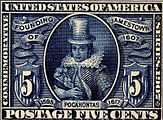
Commemorative stamp, 1907
Pocahontas as Rebecca Rolfe

Pocahontas, 1883
“Bravery, eroticism and submission is the cocktail of our learning that, rolled together, builds the mystique of the ‘Native American woman’, one that follows them as does their shadow still today. Bravery is a quality that lures however it attracts both wanted and unwanted attention, and for some it begs for submission. Add a perceived eroticism, at once enticing to a pursuer and needing to be subdued, and she is left with a combination that is potentially lethal for a young woman who is simply moving through her life, the same as everyone else.
“Modern-day subjugation comes in the form of an eroticized, racist, Halloween costume named “Poca-hottie,” that Native women say puts them at further risk of danger for perpetuating myths. And in the porn industry, an entire fetish has developed around the image of the “rez-girl,” an erotic Indian woman who is perpetually sexually available.”
“The Beginning and End of Rape: Confronting Sexual Violence in Native America”
by Sarah Deer



IS THIS:
combination of Eros, attraction, and submission the root of the violence experienced by Native American females?
IS IT:
the cause of their generational sexual exploitation?
IS IT:
the reason behind the incredibly high rates of missing and murdered Indigenous women and girls that pervades culture on the global scale?
YES, and…



This imagery pervades white populations across North America today. It is believed, not only in white American culture, and by both men and women alike, but is firmly lodged in white American consciousness.
It says:
“Native American women
are to be subjugated.”
Acknowledgment of their inherent qualities of kindness, cooperation, and willingness to find best answers for all involved is absent, qualities present from the onset of Native-White interactions, yet subdued, misused, tricked and traded by the ‘paleface’.
It is also notable that extremely high percentages of victimization are perpetrated by non-Indians against both female and male Indians.
Yet, personal testimonies of survivors say that unquestionably, exploitation of the women in the family by their own men is also a problem.
It is time to release this mentality of female, and especially Indigenous female, subjugation and imprisonment.

SUBJUGATION
Female subjugation is not exclusive to Indigenous communities.
It is found among Blacks, Hispanics, Asians, Whites, and every community type in-between, held in place by beliefs, such as:
“Selling our women is the longest tradition in our memory.”
“Prostitution is the oldest profession in the world.”
“Women cannot…
“Women are inferior…
“Women need men for guidance.”
Words that give us all license to ignore the victims and deny involvement or take any responsibility to act.
It is, however, the magnitude of the numbers effected from Native American communities that astounds and places them at the top of this very long list of abused women and girls, names that significantly lengthen the lists of Missing and Murdered Indigenous Women and Girls.
Subjugation will not simply go away because suddenly people are taking an interest in the plight of the Native American female.
We are facing generation upon generation of normalized abuse so very tightly woven into the fabric of Indigenous, and of world, culture.
So, we repeat:
Sexual predation is not acceptable.
Sexual abuse is a Violation of a person’s basic Human Rights, practiced most commonly against females.
It is worthy of our attention regardless of the person or the population affected.

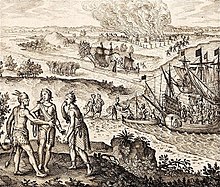
The Abduction of Pocahontas
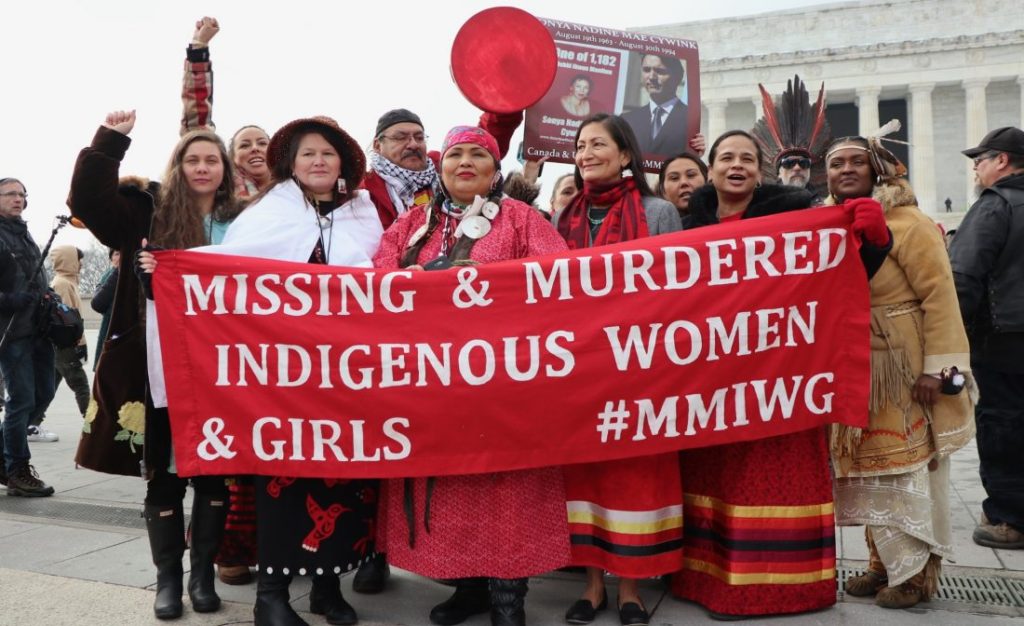
COMPARISON OF TACTICS – THEN & NOW
Tactics of subjugation used by the landing pioneers of colonial and American governments against Native women and girls have high resemblance to the tactics used by contemporary traffickers against their victims. This practice spanned a multitude of nations including the Spanish, Dutch, English, Portuguese, and French,
all of whom looked to the new territories as pots of gold, as their pots of gold, regardless of any previous inhabitation by human beings, in other words, by all Indigenous tribes. As you read through this list, remember constantly that we are speaking simultaneously of historical and of modern-day tactics:
Tactics of subjugation across ages and cultures remain indistinguishable between
Contemporary Traffickers and Colonial & American Government
- Forced prostitution
- Sexual abuse of children
- Violence, threats of physical harm
- Violence, threats against family members
- Deprivation of the essentials of food, water, clothing and shelter
- Kidnapping
- No right to refuse
- Luring under false premises
- No freedom of choice regarding their bodies
- No freedom of movement
- Forced displacement
- Imprisonment – on reservations / in locations controlled by the trafficker
- Maintaining physical disorientation through constant relocation, abuse, rape, beating, threat
- Maintaining mental disorientation through subjection, underhanded treachery, trickery and dishonesty in relationships
- Enforcing ways of interaction with one’s neighbors completely foreign to Indigenous people
- Disrespect of governing chiefs and leaders



When generational sexual exploitation and trafficking are applied to historical accounts of the founding of the US and its expansion, it is widely shown that:
The commodification and exploitation of their bodies was rife then, as it is rife today.
- European governments sent their citizens to settle the New World
- Europeans used physical force and legal mechanisms to stake their claim in the land
- Without consulting the Indian Nations, or even considering doing so, the US government granted plots to settlers
- This practice became more treacherous, less innocent, after the Indians made it clear the land was not available, that it was theirs, and settlers did not respect their claim
- ‘Settlement’ involved the enslaving of native populations, both female and male, often using violent force
- Any resistance oftentimes ended with the murder of the Indian slave
- Prosecution of the murderer rarely happened
- Sexual exploitation often results from enslavement; the combination of slavery and sexual violence leads naturally to trafficking
- As in the past, so it is today: American Native and Native Alaskan populations are subjected to the highest level and frequency of violence, largely at the hands of non-Indians
- Only ‘respectable’ white women were legally protected against rape
- Rape of Native women and all non-white women was not considered rape, leaving them outside the protection of the law
- Subjugation of the Indians came also through the legal definitions of slavery that include language referencing ownership by the enslaver
- This practice striped the enslaved of all legally recognized personal autonomy
- The financing of early settlements was largely through the slave trade. Slaves
- were abducted in Africa and brought to the New World
- were Native peoples exploited wherever the Europeans landed and wherever their descendants, now Americans, settled
- were Native Americans, captured and taken back to the European countries as tokens and objects of curiosity rather than as sovereign human beings deserving of respectful treatment
- were confined to reservations where they were completely dependent on the military and local traders for food, clothing and shelter
- were forced to “barter their honor,” to prostitute themselves, for clothing and food for themselves and their kin to avoid starvation and death
- were exploited for sexual “favors” from soldiers
- Misconceptions towards cross-cultural attitudes on consensual sexual activity separated whites and non-whites, leading to the myths of exoticism and eroticism of Native women
- Fueled by the failure of Native women to adhere to Western standards of femininity
- Fueled by the white mentality of moral superiority
- Settlers kidnapped Native people to facilitate western expansion, often forcing them to work as interpreters or informants
- A form of labor trafficking
- Prostitution reflected the destruction of the Indian social order
- Colonial activities were allowed with little to no interference from their respective European rulers
- Early white settler activities aimed largely to subjugate or annihilate Native American populations through any means possible
This predatory behavior has been legal throughout most of history. It was encouraged by dominant culture. Encouragement was also directed towards Native American women to be the willing participant,
“for the good of the Mission.”



Theoretically, contemporary prostitution laws have made this commodification illegal:
the Victims of Trafficking and Violence Protection Act of 2000 VS. History
TRAFFICKING
- Trafficking in persons is increasingly perpetrated by organized, sophisticated criminal enterprises.
- Trafficking is the fastest growing source of profits for organized criminal enterprises worldwide
- Profits from the trafficking industry contribute to the expansion of organized crime in the United States and worldwide
- Trafficking in persons is often aided by official corruption in countries of origin, transit, and destination
- Traffickers may threaten physical harm to the victim or others should the victim escape or attempt to escape, a coercive approach for control as effective as direct threats to inflict harm
HISTORICAL
- History recounts the extremely organized, sophisticated and legal enterprise of slavery
- Historically slaves were given nothing that would enable them to run, therefore costing the slave owner nothing but a bit of food, making profits higher
- History recounts great expansion of settlers throughout the New World with repeated bouts of lawlessness and treachery against the Native people
- Historically slavery was a legal enterprise and while corruption may have played a hand, it was not necessary throughout the supply chain
- History recounts repeated enforcement of control by violence in a variety of ways



Native people, in modern and in historical times, experienced all these realities in multiple ways.
In short, nothing has changed in the past 500 years, fueling the chains of generational abuse and trafficking of Native peoples and, especially, of Native women and girls.
Furthermore, increasing awareness and today’s increase in the alarming numbers of MMIWG indicates that any investigation and intervention on their behalf and that of their families in the past has been at best dismal.
This lack of interest by government and citizens of the United States towards the Indigenous Natives of this land consigns them squarely to the horrendous category called ‘throwaway people’, a description used for young drug addicts or runaways, who oftentimes fall into trafficking to support their addiction, or after being tricked by traffickers.
Through this ‘throwaway people’ lens and from its position of entitlement, the dominant culture is literally unable to see the humanity of those less fortunate and closes its eyes to their status as victims.
African, Aboriginal, Native, all receive the same treatment as sub-standard and unworthy of consideration by “The Dominant.”



We have new laws pending to change this. We have old constitutional amendments in the US to fall back on, those that were meant to end and prevent slavery and the loss of liberty.
But our colonial history broke the mold of righteousness from the start: many of the men who signed the Constitution of the United States in 1776 were slave owners themselves and the meaning of “All Men are created equal,” did not recognize all colors of men as “All Men,” let alone “All Women.” As we awaken to the racism, prejudice and injustice perpetrated against black populations through Martin Luther King, Jr., Rosie Parks and the Black Panther Movement, our understanding of the same racism, prejudice and injustice perpetrated against Native American people lies dormant, without awareness, without a thought given to it by mainstream culture, except, as is being revealed, to bury it.
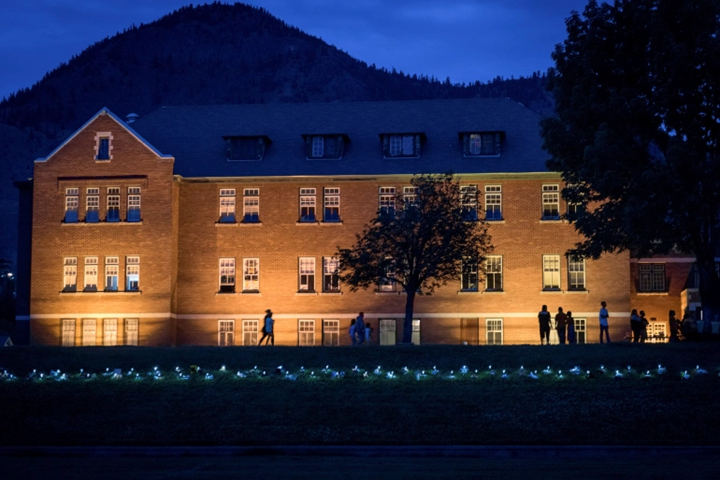
Kamloops Indian Residential School, BC, Canada

Boy’s dorm, former Kamloops Indian Residential School, BC, Canada

SUBJUGATION
Trafficking in North America long predates the creation of the U.S. government.
As European settlers spread across Native Indian lands, the Indians experienced dispossession and forced relocation. Native laws were gradually supplanted by European and the new American laws and Native women’s bodies became commodities, objects to be bought and sold for sexual gratification or for profit.
- In either case, the women were often transported far from their homes, depriving them of their freedom by making them dependent on their captors. The result was the beginning of the sex trade in the Americas.
- This exploitation was basically sanctioned by the government, even in locations where sex slavery was explicitly illegal, due to the lack of enforcement of any laws.
- Official indifference over the rights of the Native women or of the harms perpetrated against them set in motion institutionalized racism and prejudice, making those and Indian sex slavery essentially legal.
The tactics used by sex traffickers today, recognizable in the paragraphs above, have been used against Native peoples from the first moment of contact.
This dynamic continues unabated.
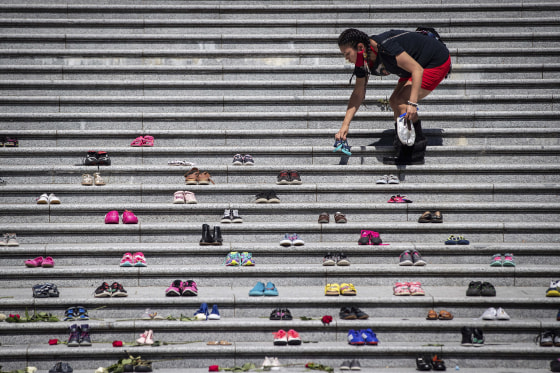
Shoes of the MMIC Vancouver Art Gallery



REMEDIES
In Honor of Sacagawea
For her outstanding contribution to the exploration of the northern Louisiana Territory, she was inducted into the National Women’s Hall of Fame in 2003 rightfully commemorating her contribution to American history equal to and alongside that of Meriwether Lewis and William Clark.
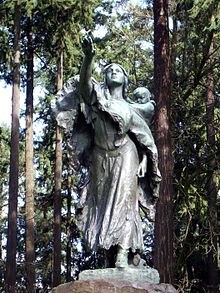
Sacagawea and Jean-Baptist, 1905 Washington Park, Portland, Oregon ~ Alice Cooper, sculptor

The Sacagawea Dollar, 2000
We cannot all be Sacajawea.
But we can act now to make a difference in every Native woman’s and girl’s life.



ACT NOW
To bring the current trend of acceptance of sexual abuse, exploitation and sex trafficking, its commonality, and its unremarkable nature, out in the open and
Make ALL Abuse Remarkable



EDUCATION
For Indigenous and all Other Populations:
- On the falsely eroticized ‘Native woman’
- To begin turning the tide of generational sexual abuse
- On the rights of Native American women and girls
- As human beings and as members of American society
- That sexual abuse, exploitation and sex trafficking have no place in society
- In Indigenous and all other populations.
LEGISLATION
Ensure Tribal, US Federal and US State laws cease to commercialize women’s bodies:
- Legislation for prevention and awareness as top priorities
- Legislation for protections for Indigenous women and children as top priorities
- Ensuring enforcement of laws
- New Legislation mandates collaboration between all sectors of law enforcement, the judicial system, survivors, families of victims, victim services and community partners
ACTIONS
Ensure actions previously sanctioned by the US government are abolished
- Regarding removal of Native women from their lands, homes and families
- Regarding removal of children into ‘missionary schools’ or otherwise taken from their families
- Regarding abolishing Indigenous practices and languages
REEMERGENCE
Encourage the reemergence of Indigenous traditions, ceremonies and song
- Ending punishment
- Encouraging practice of Indigenous Values
- To maintain cultural heritage
- For deep healing



In Memory of Pocahontas
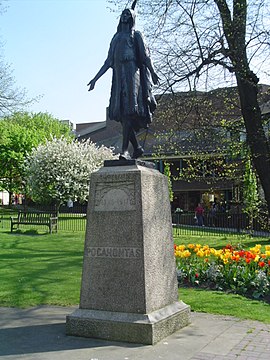
A “natural” statue of Pocahontas outside St George’s Church, Gravesend, Kent,
where she expired due to illness at the start of her journey back to Virginia.

OUR MISSION: To Prevent human trafficking before harm begins.
OUR VISION: A world free from exploitation and slavery. 
Copyright © 2024 · All Rights Reserved · Wisdom International: Help2Others
Nonprofit Website by GivingPress · RSS Feed · Log in
